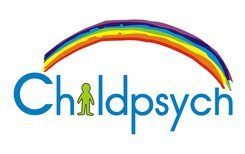Attention deficit hyperactivity disorder (ADHD) is one of the most common conditions diagnosed in children. It’s a neuro-developmental disorder that may cause a range of hyperactive and disruptive behaviours.
Children with ADHD often find it difficult to focus, sit still, and stay organised. Many children will display symptoms before the age of 7. But sometimes ADHD can go undiagnosed until adulthood. There are significant differences in how the condition manifests in boys and girls. This can affect how ADHD is recognised and diagnosed.
As a parent, it’s important to watch for all signs of ADHD and to not base treatment decisions on your child’s gender alone. The symptoms of ADHD will not be the same for each child. Two siblings may both have ADHD yet display different symptoms and also react differently to treatments.
ADHD and Gender
Boys are three times more likely to be diagnosed with ADHD than girls. This isn’t necessarily because girls are less susceptible to the disorder. Rather, it’s likely because ADHD symptoms present differently in girls. The symptoms are often more subtle and, which can make then harder to identify.
Research has shown that boys with ADHD usually show externalized symptoms. This could include things like constantly moving and acting impulsively. But girls with ADHD usually internalise symptoms. These symptoms can include inattention, daydreaming and chattiness. Since boys and girls with ADHD present so differently, there is the risk that girls difficulties are more easily overlooked. Girls often aren’t referred for evaluation because they present with fewer behavioural difficulties. This can lead to additional problems in the future.
Undiagnosed ADHD can have a negative impact on a girl’s self-esteem. It can even affect her mental health. Boys with ADHD typically externalise their frustrations. But girls with ADHD usually turn their pain and anger inward.
This puts girls at an increased risk for depression, anxiety, and eating disorders. Besides struggling academically, girls with undiagnosed ADHD may also have problems in their personal relationships with their peers.
Recognising ADHD in Girls
Girls with ADHD often display the inattentive aspects of the disorder. Whereas boys usually show the hyperactive characteristics. The hyperactive behaviours are easy to identify because the child is so busy physically and may act impulsively. The inattentive behaviours are often more subtle. Girls are usually not disruptive in class. But they might miss assignments, be forgetful, or just seem “spacey.” It would be wrong to mistake this for laziness or disinterest.
Since girls with ADHD usually don’t display “typical” ADHD behaviour, the symptoms may not be as obvious as they are in boys. The symptoms include:
- being withdrawn
- having a lack of confidence
- anxiety
- talkativeness
- struggling academically
- not paying attention or a tendency to “daydream”
- trouble focusing
- appearing not to listen
- verbal aggression, such as teasing, taunting, or name-calling
Recognising ADHD in Boys
Though ADHD is often under-diagnosed in girls, it can be missed in boys as well. Boys are often expected to be energetic. So running around and acting out may be dismissed as simply “boys being boys.” Studies show that boys with ADHD can be more hyperactive and impulsive than girls. But it would be a mistake to assume that all boys with ADHD are hyperactive or impulsive. Some boys can also be daydreamers. And they may not be diagnosed because they aren’t physically disruptive.
Boys with ADHD tend to display the symptoms that most people think of when they imagine ADHD behaviour. They include:
- acting without thinking (impulsivity)
- hyperactivity and needing to move constantly
- lack of focus
- inability to sit still
- physical aggression
- frequently interrupting other peoples’ conversations and activities
While girls and boys with adhd may look different, it’s critical for them to be treated. The symptoms of ADHD do tend to lessen with age, but they can still affect many areas of life. People with ADHD often struggle with school, work, and relationships. They’re also more likely to develop other conditions like anxiety, depression, and learning disabilities. If you suspect your child has ADHD, have them assessed as soon as possible. Getting a prompt diagnosis and treatment can improve symptoms. It can also help prevent other disorders from developing in the future.
For more information about helping your child with ADD, contact Anel Annandale at 083 711 5267 or via email at anel@childpsych.co.za.

